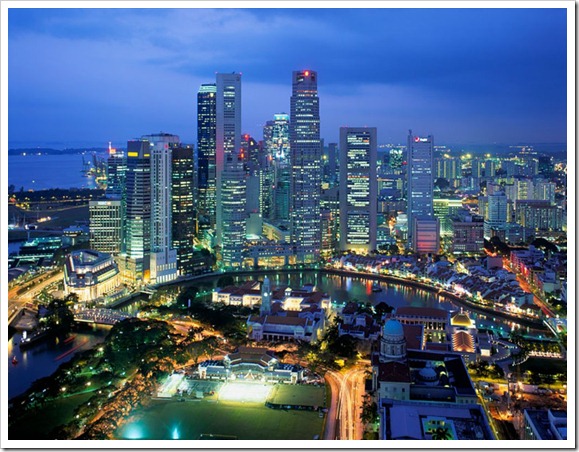
Singapore | The power of ASIA 2013
LUANDA - Wealth managers are stepping up their search for staff to expand in Asia as Singapore starts to overtake Switzerland as the world’s top private banking hub.
Singapore will overtake Switzerland as the biggest offshore wealth center in terms of assets under management by 2020, according to research firm WealthInsight.
A separate survey of advisers by PwC said Singapore would leapfrog Switzerland this year in terms of reputation. A broader survey by adviser Z/Yen in March named Hong Kong and Singapore as two of the world’s top four financial centers behind London and New York. Singapore was tipped for the top more frequently than any other city.
The business case for wealth management in Asia is clear: Singapore had the highest percentage of millionaire households in the world at the end of 2011, according to research from the Boston Consulting Group, and Hong Kong had the highest number of billionaires relative to the size of its population. While private wealth in the Asia-Pacific region ex-Japan increased by 10.7% to $23.7 trillion in 2011, private wealth declined in North America and Western Europe.
Advisers say Singapore’s low tax rate, stable currency, efficient corporate registration and clearly defined regulation have become more attractive than Switzerland.
Sebastian Dovey, managing partner of advisory firm Scorpio Partnership, said: “Whichever year you want to choose, Singapore is on a trajectory to get to the top.”
Chris Wheeler, senior analyst at Mediobanca Securities, said: “If you want to be anywhere in the international wealth advisory business, you need to be in Singapore.”
For advisers based in Switzerland, the move’s not a cheap one.
Mr. Dovey said the war for talent in Asia and real estate costs made Singapore one of the world’s most expensive places to set up a wealth advisory business. The ratio between costs and income in Europe averaged 73%: “But the ratio is 10 percentage points higher in Singapore,” he said.
An executive at a large wealth advisory firm said he knew of advisers “working at a loss in the hope of getting market share”.
Even so, BNP Paribas Wealth Management plans to add 200 private bankers in Asia over the next three to five years, the firm told Financial News, MoneyBeat’s sister journal. Rory Tapner, chief executive of private bank Coutts, part of the Royal Bank of Scotland RBS.LN -2.09%, said he wanted to double his client-facing staff in Asia in the next two or three years.
Swiss bank Julius Baer calls Asia its “second home market” after buying Merrill Lynch’s international wealth business. Chief executive Boris Collardi has said the deal doubles Julius Baer’s market share in north and south-east Asia and told a Chinese newspaper that the firm would more than double its staff in Asia by 2015.
First-quarter results from banks with large wealth businesses have illustrated how capital investment in Asia can pay off. Asia-Pacific flows were up 11% year-on-year at Swiss bankUBS UBSN.VX -2.28%, representing a third of the bank’s Sfr15bn ($16.05bn) in net new wealth assets. Inflows from clients in Europe were lower at just Sfr 1.1bn.
At Credit Suisse CSGN.VX -2.37%, assets under management for wealth clients in Asia were up 21% year-on-year, the strongest growth of any region.
And banks on both sides of the Atlantic are pruning their wealth-management businesses: Morgan Stanley MS -1.26% last month sold its European arm to Credit Suisse, while Lloyds Banking Group LLOY.LN -0.88% is said to be considering selling some international wealth operations.
By Sarah Krouse and Mike Foster | Wsj

 U.S. Marines landing in the Jordanian port of Aqaba
U.S. Marines landing in the Jordanian port of Aqaba

